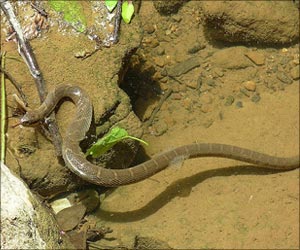
‘Providing healthcare benefits and interventions about snake bite in remote areas can help the people who are at risk.’
Tweet it Now
According to Pigott, nations whose people are most vulnerable include: Benin, Congo (Brazzaville), Ethiopia, Myanmar, Nigeria, Papua New Guinea and South Sudan.He and the other researchers identified the regions and nations where it is hard to access treatment. Besides, they generated range maps of 278 species of venomous snakes listed by the World Health Organization (WHO).
The study cross-referenced this data using criteria such as transport time to care facilities with anti-venom medications and quality of care based a health care access and quality index, which examines 32 causes from which death should not occur in the presence of effective health care.
In May, the WHO mandated that a comprehensive plan is developed supporting countries in implementing measures for greater access to treatment for people bitten by venomous snakes. This followed a declaration last year that poisoning from snakebites is a neglected tropical disease.
Other research concludes that an estimated 5 million people are bitten every year by poisonous snakes, and about 125,000 of them die. As a result, it is one of the most burdensome neglected tropical diseases.
Advertisement
Researchers from the Geneva-based Université de Genève and the Hôpitaux Universitaires de Genève participated in the study. "Thanks to this model, we were able to construct three maps that allowed us to uncover the three hot spots in terms of these three criteria, focusing most heavily on the zones where the individuals are most vulnerable," said Nicolas Ray, researcher at the Institute of Environmental Sciences and at the Institute of Global Health at Université de Genève.
Advertisement
Source-Eurekalert










